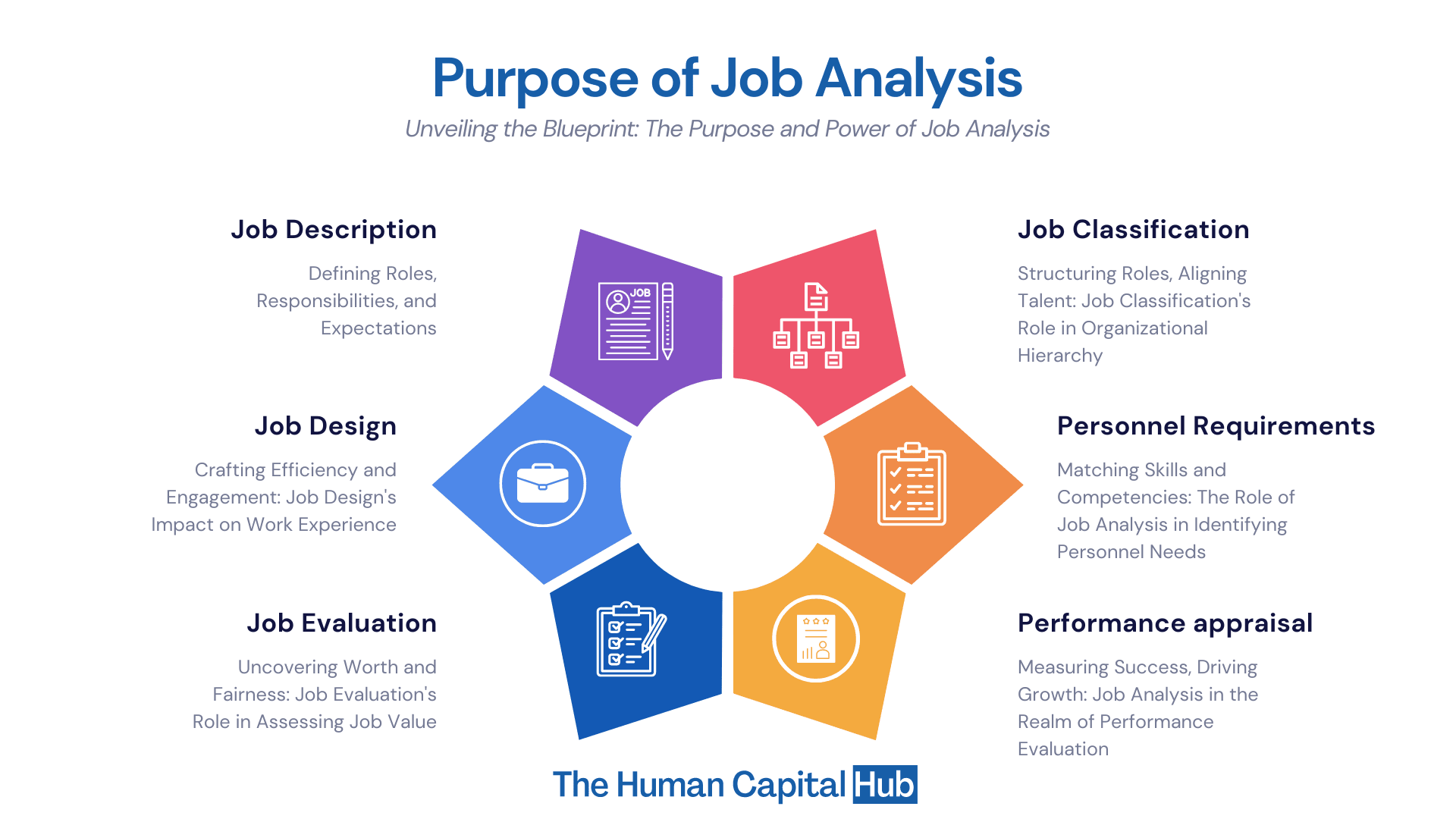Job analysis is an important function in the field of human capital management. Its history is centuries old. Societies that succeeded were predicated on the efficient expenditure of energy for a common goal. That also involved teamwork and a clear definition of roles. Its most contemporary form was conceptualized in the early twentieth century by Frederick Taylor and Lillian Moller Gilbreth, two founders of industrial/organizational psychology.
In the job analysis process, the analyst discusses the incumbent's tasks, the nature and conditions of work, and some basic qualifications. Following this, the analyst completes a job psychograph that outlines the KSAOs( Knowledge, Skills, Abilities, and other characteristics) necessary for the job.
So what is Job Analysis?
Job analysis is the process of examining a job to determine what activities and duties it entails, how it fits in with other jobs, the credentials required, and the working conditions. It is important to note that, even though information about the job can be obtained from the incumbent, what is key in job analysis is the job itself and not the job holder
Advertisment
Purpose of Job Analysis
Job analysis is quintessential to most basic Human Resource functions. It provides inputs for the following:
1. Job Description
A Job description is a document describing the criteria for a new post, such as essential skills, role in relation to the team, and capabilities of a prospective candidate. Job analysis provides the necessary information when creating this document.
2. Job Design
Job design is the process of developing a job that allows the company to meet its objectives while fostering employee engagement.
3. Job Evaluation.
Although it is often confused with job analysis, job evaluation is a different process altogether. While job analysis thoroughly examines every facet of a specific job, job evaluation involves determining a job's value or worth in relation to others. The latter is done to determine a fair wage for the job.
It follows that to determine the worth objectively, the job in question needs to be adequately defined. The goal is to achieve wage equity and transparency.
4. Job Classification
This is the process of placing jobs into a cluster of similar jobs to set pay grades.
5. Personnel Requirements
By clearly defining the work that needs to be undertaken, job analysis informs practitioners on the right person for the job.
6. Performance appraisal
This is a systematic way of evaluating the performance of an employee after the fact. Job analysis can be used to develop KPI against which an incumbent would be measured.
Types of Job Analysis
Figuring out which duties an employee is to perform is no easy task. However, of the several ways in which this can be done, they can be broadly segmented into task-oriented and worker-oriented.
Task-oriented job analysis focuses on the procedures and actual tasks performed. On the other hand, worker-oriented focuses on the KSAOs necessary for the job.
Below are examples of different types of Job analysis
1. Highly structured Questionnaires
Only certain replies are allowed on these surveys, which are used to determine the frequency with which various activities are completed, their relative significance, and the abilities necessary. The structured questionnaire is useful for objectively defining a job and allowing computer models to be used for analysis.
2. Open-Ended Questionnaire
This method involves the incumbent (and at times the supervisor) filling out a questionnaire about the knowledge, skills, and abilities necessary for the job. Because of its consultative nature, this strategy generates reasonable job requirements and aids in the analysis of several tasks with limited resources.
Questionnaires are practical, cost-effective, and time-efficient. However, they have drawbacks. For example, answers given may not be accurate as an incumbent may want to make their job seem more complex or important than it is.
3. Interviews
In this type of job analysis, the interviewer uses predetermined questions, an analyst interviews an incumbent. The purpose is to ascertain the KSAs necessary for the position. This method is best suited for professional jobs with skilled incumbents. However, it may be time-consuming.
As the name suggests, an incumbent is observed undertaking their daily tasks. The activities are then noted. This information is then used to develop the KSAs. This provides a realistic view of the tasks undertaken. It is most appropriate for short-cycle production jobs. It is advisable to combine observation and interviews for a more holistic interpretation.
4. Functional Job Analysis
Fine and Cronshaw (1944) developed a strategy for recording information about the job content that uses precise terminology and a systematic job analysis "schedule." Elements of the work are scored by how related they are to data, people and things.
5. Job Pschographic Method
An interesting development in the field of job analysis was put forward by Viteles (1924, 1932). According to this model, an incumbent is assessed against a uniform list of traits on a five-point scale. According to Viteles (1932), for this model to be executed effectively, the following conditions must be met
- Correct categorization of mental skills required for the work.
- A valid method of evaluation
- Analysis by trained professionals
6. Work-log diary
This method involves an employee keeping an accurate record of their daily tasks and their time to complete these tasks. The analyst identifies patterns and translates those into the duties and responsibilities required for the position.
7. Experts Conference
This method involves the consultation of highly skilled job holders with verifiable experience. They provide the analyst with deeper insight which they may not get just from consulting an incumbent
The process of job analysis requires diligence. The practitioner must select the method(s) best suited to the context in terms of the organization's size, time, and resources at their disposal.
Related: How to Access Decades of News with a News Archive API: Guide For Journalism Professionals
